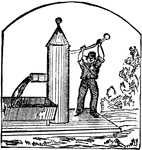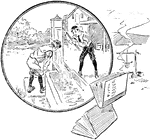
Sprengel Pump
The Sprengel pump is a vacuum pump invented by Hanover-born chemist Hermann Sprengel in 1865 while he…
!["Steam pumps are force pumps operated by steam acting on the piston of a steam engine directly connected to the pump, and in many cases cast with the pump. A section of a double-acting steam pump, showing the steam and water cylinders, with other details, is illustrated [here]." —Hallock 1905](https://etc.usf.edu/clipart/36100/36172/steam_pump_36172_mth.gif)
Steam Pump
"Steam pumps are force pumps operated by steam acting on the piston of a steam engine directly connected…
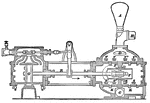
Steam Pump
A typical steam pump. A steam pump is a force pump operated by steam acting on the pistons of a steam…

Application of Steam Engine Jet Condenser used to Pump Well Water
An illustration showing the application of a jet condenser to pump a well. The steam enters the engine…
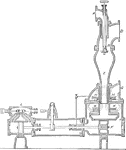
Steam Engine Jet Condenser with Pump
A sliced view of a jet condenser with pump. The steam enters at D, while cold water enters at A. The…

Stomach Pump
"The stomach pump injects liquid into a poisoned person's stomach and then withdraws the liquid and…
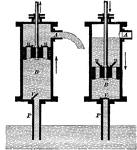
Suction Pump
"The suction pump uses suction, water pressure and one-way valves to suction water from a well or other…
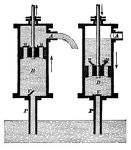
Suction Pump
A section of a suction pump. If the piston in the pump were to be lowered, the water level would also…
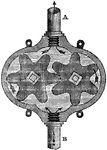
Rotary Pump
"The design is to produce a continued stream, by simply turning it into a crank, thus converting the…

Steam Engine Condenser with Pumps
An illustration of the water entering and exiting the condenser through pump. The cooling water enters…

Stomach Pump
"It consists of a common metallic syringe, A, screwed to a cylindrical valve box, B, which contains…

Suction-pump
The suction-pump consists of a clindrical pump-barrel traversed by a piston, and communicating by means…

Suction-pump
A suction-pump with the upward and downward movement of the piston being effected by means of a lever.
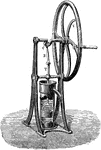
Suction-pump
A suction-pump in which the alternate motion of the piston is effected by means of a rotary motion.

Syringe
A syringe is a simple piston pump consisting of a plunger that fits tightly in a tube. The plunger can…
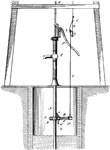
Vent Controlling Mechanism for Pumps
A pump is a device used to move fluids, such as liquids or slurries, or gases. A pump displaces a volume…

Water Tower Condenser Steam Cooling System in Engine Room
A diagram illustrating cooling steam exhaust of steam engine using a water tower. The water is pumped…


